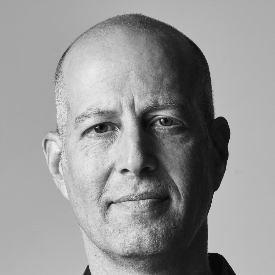Helena de Bres is a professor of philosophy at Wellesley College, Massachusetts. Her essays and humor writing have appeared in The Point, the New York Times, the Los Angeles Review of Books, McSweeney’s Internet Tendency, and elsewhere.
Julia de Bres is a freelance illustrator and a senior lecturer in linguistics at Massey University in New Zealand.
Below, Helena shares 5 key insights from their new book, How to Be Multiple: The Philosophy of Twins. Listen to the audio version—read by Helena herself—in the Next Big Idea App.

1. Twins are freaks.
The word “freak” here isn’t meant pejoratively, it’s more the neutral, dictionary sense of “odd,” “unusual,” or “anomalous.” Identical twins in particular are very rare—only 0.3 percent of the population—and in both the similarity of their appearances and the closeness of their connection, they’re far outside the human norm.
Throughout history, humans have used freaks as a teaching tool and a source of validation for the allegedly normal among us. People used to go to 19th-century freak shows not only for the sheer spectacle but also to reassure themselves and their children that unlike, say The Bearded Lady or The Fat Man or The Savage, they had hair in the right places, a well-defined gender identity, and an appropriate size.
In this way, the freak show set up and supported a powerful image of the ideal human, and by opposition, conjoined twins were a fixture on the freak show circuit. Even though literal freak shows are now out of fashion, freakish twins, whether conjoined or unconjoined, continue to be used in a similar, more covert, way by singletons, or non-twins. How do singletons use twins as modern-day freaks? Well, from the late Middle Ages on, the best human life has been portrayed in the West as one of self-governed individual action, free of the influence and demands of other people. Twins depart from that atomistic picture in multiple ways: physically, cognitively, emotionally, and agentially (in terms of agency). Twins tend to overlap and seep into each other, and this interdependence is a deviant way of being in Western culture. So in a variety of ways, singletons use twins as a kind of cautionary tale and an image of what to avoid.
2. Twins can share a self.
People often imply that twins aren’t fully distinct people, but rather a single person, split or duplicated. Antonio asks of Sebastian and Viola in Twelfth Night, “How have you divided yourself? An apple, cleft in two, is not more twin than these two creatures.” Any pair of twins you may know will have tales of being given a single birthday present to share, being referred to as “the twins” instead of by their individual names, and being treated as essentially interchangeable by teachers, friends, or relations.
“They can share a mind, they can share agency, and they can share an identity.”
For much of my life, I thought this idea that twins are a single person was obviously false. My twin Julia and I have distinct personalities and we live independent lives in different countries. I don’t have access to her calendar, let alone her thoughts, and when someone steps on her foot, I don’t feel it. So, of course, we’re not the same person, I used to think. However, recently I’ve been wondering if there’s actually something to this idea. I think in fact that twins actually can share personhood, in three distinct ways: they can share a mind, they can share agency, and they can share an identity.
What’s cool about this is that once you recognize twins doing these things, you can see that non-twins do them too, albeit in a less obvious way. The metaphysical boundaries between parents and children, spouses, and close friends are a lot more porous than we like to think. What makes you so sure that all of you is contained, solo, within that single envelope of skin?
3. Twins reveal the limits, and the benefits of binary thinking.
When twins aren’t being treated as a single person, they’re often treated as binary opposites. For instance, in my twinship, I’ve always been an introvert, and my sister has been an extrovert. In other cases, one twin is the “evil twin,” the other the “good twin.” Or perhaps the Chaos Muppet and the Order Muppet, or the “tomboy” and the “femme.”
Many stories about twins have this structure, a stark opposition in character, virtue, or preoccupation is set up and one twin is positioned at each end of the spectrum. It’s easy to criticize binary thinking for being cramping and reductive, but there are useful things about the binarizing habit too. We humans set up these kinds of polarized contrasts to make the chaos we encounter every day easier to manage or to make our surroundings and our associates seem more orderly and predictable; to create a stable sense of our own distinctive personality features and talents. Binary thinking has played a major role in my own life as a twin because as the quiet one, it formed my early sense of who I was, and also fueled my plan to be a writer.

Julia was the illustrator in our family and that freed me as a kid to feel writing was my true vocation: my special thing. You might recognize this polarization of identity in your life too, in relation to your siblings growing up, or your spouse or best friend now. Of course, no one can really be cleanly positioned at one end of a binary, we’re all much more complicated than that. So if our sense of self bears the mark of binary thinking should we be worried that our identity is somehow inauthentic?
While binary thinking can be taken too far, there’s nothing inauthentic in principle about forming your sense of self in relation to another person. We humans are relational beings; essentially, we co-create each other. There’s actually something beautiful about that: once you conceive of it in the right way, and in the especially vivid case of twins, it can help you understand that.
4. Twins are relationship outlaws.
My twin sister and I are both queer, and I couldn’t help noticing an odd set of parallels between the ways that twins and gay couples are portrayed in our culture. Twins are often presented as kind of gay: think of the common sexual fantasy of female identical twins making out for instance, and gay couples are often presented as kinda “twinny.” I recently came across the term “dyke alike” which captures the idea that lesbians tend to date women who look like them. What’s even more interesting is that both queer couples and twins are pathologized in art and popular culture in similar ways. They’re presented as immature, selfish, immoral, mentally ill, violent, and sexually deviant. Twins are often assumed to be at risk of committing “twincest,” as it’s cutesily called, and stories about them have tended to end with at least one party dying, via murder, suicide, or both.
“Both queer couples and twins are pathologized in art and popular culture in similar ways.”
So, what’s going on here? Are both queer couples and twins demonized because they are relationship outlaws? They both depart from the central expectation in a straight culture, that super-close adult couples will be romantic partners of different genders. In one particular way, a very close twinship actually represents a more radical form of love than queerness does. Queer couples may share a gender, but they’re still in a sexual-romantic relationship. Close twins ditch that part; they put a platonic connection at the very heart of their life. They may live next door to each other or in the same house. They may co-raise each other’s children, or go on frequent joint vacations without their spouses. They may even wear matching outfits or go to a twin festival to try and marry a matching pair.
Wrong wrong wrong, we all scream, this is no way to protect marriage and the nuclear family. Twins have to die at the end of the movie to preserve the safety of the nation. Thinking about twinship in a more open-minded and subtle way than we standardly do can help each of us broaden our sense of what counts as a healthy and meaningful human relationship.
5. Twins can help us chill about free will.
Twins trigger many singletons into doubting the existence of human free agency, sometimes to the point of panic. The likeness of identical twins goes well beyond their looks and encompasses their interests, values, talents, and personality traits. In 1940, there were famous identical twins who were separated at birth. When they reunited at 39, they discovered that they’d each been christened Jim, called their pet dog Toy, married a Linda and then a Betty, and named their son James Alan. They both worked security jobs, drove Chevys, spent their weekends doing woodwork in their garages, and vacationed at the same beach in Florida. The results of their personality, intelligence, and brain-wave tests came out almost identical; they consumed large amounts of nicotine and beer; they weighed exactly 180 pounds, and they both bit their nails to the quick during the day.
If we assume that their shared genes explain these similarities, it looks like much of who any of us is derived from biological forces beyond our control. If who we are determines in turn how we behave, how can any of our actions be genuinely chosen? Identical twins whose lives take very different paths inspire a somewhat different anxiety. There was this rom-com in the 90s called Sliding Doors which split into parallel storylines partway through, narrating the dramatic consequences of Gwyneth Paltrow either catching or not catching a single train. Just like in that movie, identical twins with strikingly diverse life experiences underscore for singletons the role that purely circumstantial factors play in how their own lives turn out. Identical twins are much less worked up about this than non-twins are, which seems to make sense.
For one thing, identicals have gotten very used to the idea that their genes determine much of who they are. They’ve seen the obvious mark of their shared biological inheritance on their lives from day one. However, twins are less likely to yearn for a causal history that’s somehow free from the external influences of nature and nurture. Twins who get on well are more inclined to value than fear the sort of intimate connections with another human that deeply influences who one is. All in all, the case of twins is best seen not as undermining the possibility of free will, but as providing reassurance that the kind of everyday freedom we all have is more than enough.
To listen to the audio version read by author Helena de Bres, download the Next Big Idea App today:






























